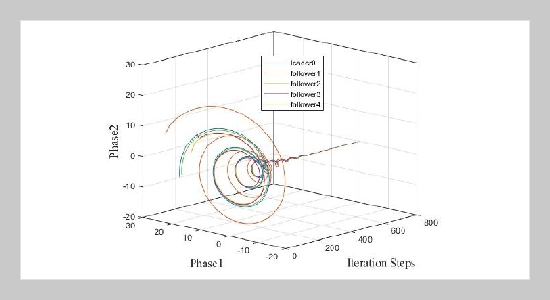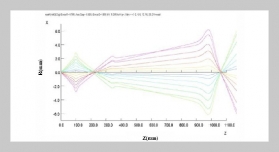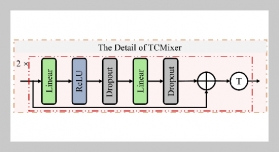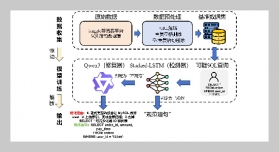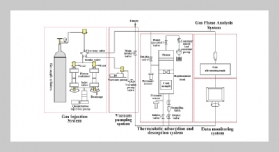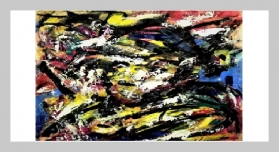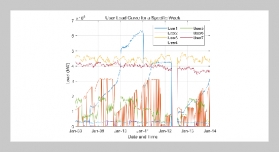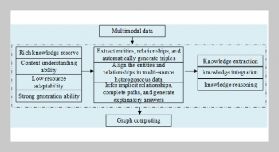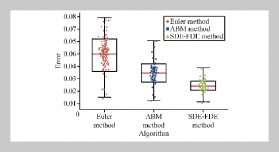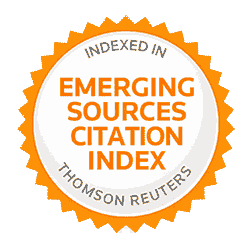REFERENCES
- [1] Y. Cai, H. Zhang, Y. Liang, and Z. Gao, (2020) “Reduced-order observer-based robust leader-following control of heterogeneous discrete-time multi-agent systems with system uncertainties" Applied Intelligence 50(6): 1794–1812. DOI: 10.1007/s10489-019-01553-x.
- [2] K. Patel and A. Mehta. Discrete-Time Sliding Mode Protocols for Discrete Multi-Agent System. 303. Springer, 2021.
- [3] X.-K. Wang, X. Li, and Z.-Q. Zheng, (2013) “Survey of developments on multi-agent formation control related problems" Kongzhi yu Juece/Control and Decision 28(11): 1601–1613.
- [4] Y. Xia, X. Na, Z. Sun, and J. Chen, (2016) “Formation control and collision avoidance for multi-agent systems based on position estimation" ISA Transactions 61: 287–296. DOI: 10.1016/j.isatra.2015.12.010.
- [5] S. Li, J. Zhang, X. Li, F. Wang, X. Luo, and X. Guan, (2017) “Formation Control of Heterogeneous Discrete-Time Nonlinear Multi-Agent Systems with Uncertainties" IEEE Transactions on Industrial Electronics 64(6): 4730–4740. DOI: 10.1109/TIE.2017.2674590.
- [6] Y.-G. Hong and C. Zhai, (2011) “Dynamic coordination and distributed control design of multi-agent systems" Kongzhi Lilun Yu Yingyong/Control Theory and Applications 28(10): 1506–1512.
- [7] W. Yu, W. Ren, W. X. Zheng, G. Chen, and J. Lü, (2013) “Distributed control gains design for consensus in multi-agent systems with second-order nonlinear dynamics" Automatica 49(7): 2107–2115. DOI: 10.1016/j.automatica.2013.03.005.
- [8] L. Liu, (2015) “Adaptive cooperative output regulation for a class of nonlinear multi-agent systems" IEEE Transactions on Automatic Control 60(6): 1677–1682. DOI: 10.1109/TAC.2014.2360023.
- [9] P. Shi and Q. Shen, (2015) “Cooperative Control of Multi-Agent Systems with Unknown State-Dependent Controlling Effects" IEEE Transactions on Automation Science and Engineering 12(3): 827–834. DOI: 10.1109/TASE.2015.2403261.
- [10] M. S. Mahmoud and G. D. Khan, (2018) “LMI consensus condition for discrete-time multi-agent systems" IEEE/CAA Journal of Automatica Sinica 5(2): 509–513. DOI: 10.1109/JAS.2016.7510016.
- [11] X. Zhang, H. Ma, and C. Zhang, (2021) “Decentralised adaptive synchronisation of a class of discrete-time and nonlinearly parametrised coupled multi-agent systems" International Journal of Control 94(2): 461–475. DOI: 10.1080/00207179.2019.1598577.
- [12] Q.Wei, X.Wang, X. Zhong, and N.Wu, (2021) “Consensus Control of Leader-Following Multi-Agent Systems in Directed Topology with Heterogeneous Disturbances" IEEE/CAA Journal of Automatica Sinica 8(2): 423–431. DOI: 10.1109/JAS.2021.1003838.
- [13] H. Zhao and S. Fei, (2018) “Distributed consensus for discrete-time heterogeneous multi-agent systems" International Journal of Control 91(6): 1376–1384. DOI: 10.1080/00207179.2017.1315650.
- [14] X.Wang, Y. Hong, J. Huang, and Z.-P. Jiang, (2010) “A distributed control approach to a robust output regulation problem for multi-agent linear systems" IEEE Transactions on Automatic Control 55(12): 2891–2895. DOI: 10.1109/TAC.2010.2076250.
- [15] H. Kim, H. Shim, and J. H. Seo, (2011) “Output consensus of heterogeneous uncertain linear multi-agent systems" IEEE Transactions on Automatic Control 56(1): 200–206. DOI: 10.1109/TAC.2010.2088710.
- [16] N. Li, H. Ma, C. Du, X. Zhang, and X. Liu, (2021) “Distributed adaptive containment control for a class of discrete-time nonlinear multi-agent systems with uncertainties" International Journal of Control 94(8): 2186–2199. DOI: 10.1080/00207179.2019.1695950.
- [17] B. Kiumarsi and F. L. Lewis, (2017) “Output synchronization of heterogeneous discrete-time systems: A modelfree optimal approach" Automatica 84: 86–94. DOI: 10.1016/j.automatica.2017.07.004.
- [18] C. Mu, Q. Zhao, and C. Sun, (2020) “Optimal Model-Free Output Synchronization of Heterogeneous Multiagent Systems under Switching Topologies" IEEE Transactions on Industrial Electronics 67(12): 10951–10964. DOI: 10.1109/TIE.2019.2958277.
- [19] T. Feng, J. Zhang, Y. Tong, and H. Zhang, (2021) “Qlearning algorithm in solving consensusability problem of discrete-time multi-agent systems" Automatica 128: DOI: 10.1016/j.automatica.2021.109576.
- [20] Y. Cao and W. Ren, (2012) “Distributed coordinated tracking with reduced interaction via a variable structure approach" IEEE Transactions on Automatic Control 57(1): 33–48. DOI: 10.1109/TAC.2011.2146830.
- [21] C. Yuan and H. He, (2018) “Cooperative output regulation of heterogeneous multi-agent systems with a leader of bounded inputs" IET Control Theory and Applications 12(2): 233–242. DOI: 10.1049/iet-cta.2017.0641.
- [22] Y.-K. Zhu, X.-P. Guan, and X.-Y. Luo, (2013) “Finitetime consensus of heterogeneous multi-agent systems" Chinese Physics B 22(3): DOI: 10.1088/1674-1056/22/3/038901.
- [23] S. Yang, J.-X. Xu, D. Huang, and Y. Tan, (2014) “Optimal iterative learning control design for multi-agent systems consensus tracking" Systems and Control Letters 69(1): 80–89. DOI: 10.1016/j.sysconle.2014.04.009.
- [24] X. Li, X. Luo, J. Wang, and X. Guan, (2018) “Finitetime consensus of nonlinear multi-agent system with prescribed performance" Nonlinear Dynamics 91(4): 2397–2409. DOI: 10.1007/s11071-017-4020-1.
- [25] C. Mu, C. Sun, A. Song, and H. Yu, (2016) “Iterative GDHP-based approximate optimal tracking control for a class of discrete-time nonlinear systems" Neurocomputing 214: 775–784. DOI: 10.1016/j.neucom.2016.06.059.
- [26] C. Mu, D. Wang, and H. He, (2017) “Novel iterative neural dynamic programming for data-based approximate optimal control design" Automatica 81: 240–252. DOI: 10.1016/j.automatica.2017.03.022.
- [27] Z. Peng, Y. Zhao, J. Hu, and B. K. Ghosh, (2019) “Datadriven
optimal tracking control of discrete-time multiagent systems with two-stage policy iteration algorithm" Information Sciences 481: 189–202. DOI: 10.1016/j.ins.2018.12.079.
- [28] B. Jang, M. Kim, G. Harerimana, and J.W. Kim, (2019) “Q-Learning Algorithms: A Comprehensive Classification and Applications" IEEE Access 7: 133653–133667. DOI: 10.1109/ACCESS.2019.2941229.
- [29] Z. Xiao, J. Li, and P. Li, (2020) “Output Feedback H Control for Linear Discrete-Time Multi-Player Systems with Multi-Source Disturbances Using Off-Policy QLearning" IEEE Access 8: 208938–208951. DOI: 10.1109/ACCESS.2020.3038674.
- [30] M. Li, L. Sun, and R. Yang, (2018) “Finite-time H control for a class of discrete-time nonlinear singular systems" Journal of the Franklin Institute 355(13): 5384–5393. DOI: 10.1016/j.jfranklin.2018.05.033.
- [31] G. Zong, R. Wang, W. Zheng, and L. Hou, (2015) “Finite-time H control for discrete-time switched nonlinear systems with time delay" International Journal of Robust and Nonlinear Control 25(6): 914–936. DOI: 10.1002/rnc.3121.
- [32] L. Zhou, J. She, and S. Zhou, (2018) “Robust H control of an observer-based repetitive-control system" Journal of the Franklin Institute 355(12): 4952–4969. DOI: 10.1016/j.jfranklin.2018.05.024.
- [33] L. Li and F. Liao, (2018) “Robust preview control for a class of uncertain discrete-time systems with time-varying delay" ISA Transactions 73: 11–21. DOI: 10.1016/j.isatra.2018.01.005.
- [34] Y. Su and J. Huang, (2012) “Cooperative output regulation of linear multi-agent systems" IEEE Transactions on Automatic Control 57(4): 1062–1066. DOI: 10.1109/TAC.2011.2169618.
- [35] H. Zhang, H. Jiang, Y. Luo, and G. Xiao, (2017) “Data-Driven Optimal Consensus Control for Discrete-Time Multi-Agent Systems with Unknown Dynamics Using Reinforcement Learning Method" IEEE Transactions on Industrial Electronics 64(5): 4091–4100. DOI: 10.1109/TIE.2016.2542134.
- [36] X. Yang, H. Zhang, and Z. Wang, (2021) “Data-Based Optimal Consensus Control for Multiagent Systems With Policy Gradient Reinforcement Learning" IEEE Transactions on Neural Networks and Learning Systems: DOI: 10.1109/TNNLS.2021.3054685.
- [37] M. I. Abouheaf, F. L. Lewis, M. S. Mahmoud, and D. G. Mikulski, (2015) “Discrete-time dynamic graphical games: model-free reinforcement learning solution" Control Theory and Technology 13(1): 55–69.


